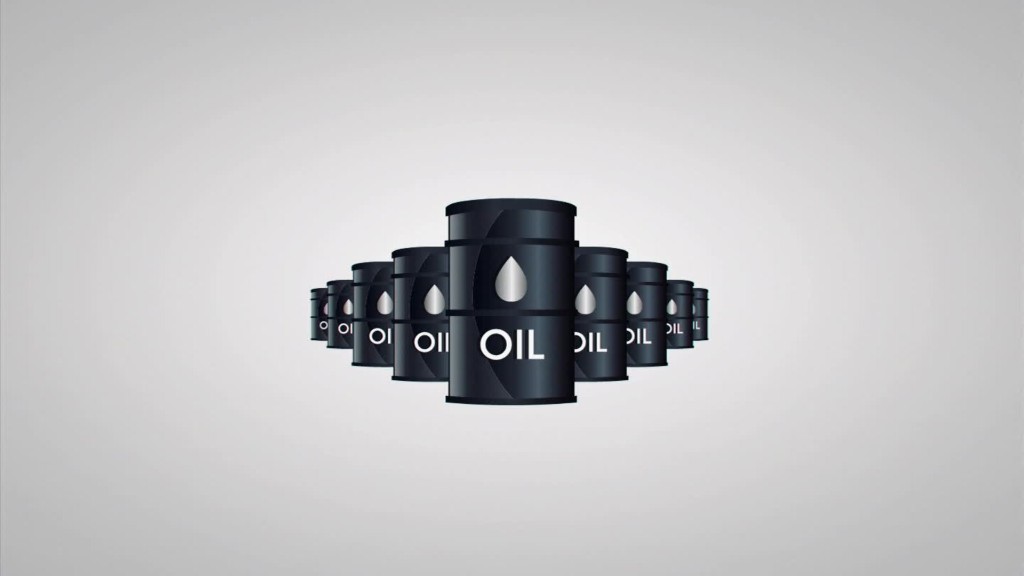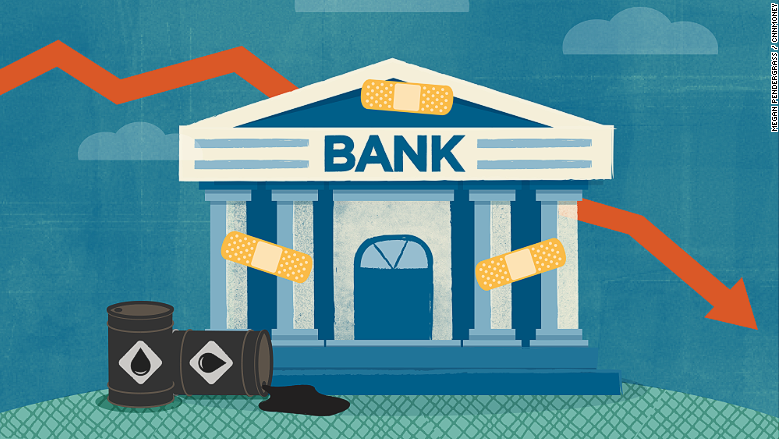
Cheap oil is creating headaches for the Wall Street firms that bankrolled America's oil boom.
That's because the crash in oil prices is putting energy companies under financial stress. Oil revenue has dried up, yet these companies are still saddled with tons of debt.
America's largest banks are now raising red flags about the health of those loans. For the second-straight quarter, the banks have warned investors about an uptick in troubled energy loans.
Banks "are going to lose money on the loans they've made. That's pretty evident -- whether oil prices go to $30 or $80 a barrel," said Dick Bove, an analysts who covers banks at Rafferty Capital.
Related: How to get started investing...for $5
Banks brace for defaults
The American energy boom of the past decade was fueled by a wave of cheap credit from big banks. But now cracks have begun to emerge in that boom because oil prices have plunged from around $100 last year to below $50 today.
Wells Fargo (WFC) on Wednesday said it was forced to set aside more cash to cushion against potential commercial defaults due to the "deterioration in the energy sector."
Bank of America (BAC) reported it may need to set aside an additional 15% to deal with troubled commercial loans, specifically in its oil and gas portfolio.
JPMorgan Chase (JPM) too boosted its oil and gas loan-loss reserves by about $160 million last quarter. The increase was driven by the sentiment that "oil prices will remain low for longer," Marianne Lake, JPMorgan's chief financial officer, told reporters during a conference call.

Related: The biggest American debt selloff in 15 years
Not a repeat of the subprime crisis
It's important to note that energy loans do not appear to pose an existential threat to big banks like mortgage loans did just seven years ago.
Bove estimates the oil portfolio represents just 2% to 3% of big banks' total loans, compared with 33% for residential real estate before the financial crisis.
"It's not going to be earth-shattering," said Bove.
Bank of America, for instance, reported $46 billion in commercial credit exposure to the energy industry as of the end of September, up from $41.5 billion the year before. That compares to a total of $900 billion in commercial loan capital.
Related: Oil's wild ride isn't over yet
If banks yank credit, oil companies could collapse
Still, it's possible banks will need to set aside more money to protect against loan losses if oil prices remain depressed. Banks usually go through "redetermination" in the fall. It's a twice-a-year process where they reevaluate the amount of financing they will provide based on the amount of oil a company can pump at current prices.
Banks could choose to yank financing on struggling oil companies, driving some into fire sales or even out of business.
There could be an increase in bankruptcies "if the financial sector gets scared or handcuffed," said Riccardo Bertocco, a partner at Bain & Co. who specializes in oil and gas.
Related: Cracks emerge in U.S. oil boom
But JPMorgan chief Jamie Dimon signaled the bank will be patient so as not to ruin long-standing relationships with the oil industry.
"That's what we're here for: to lend to clients, particularly in tough times. You can't be a bank that every time something goes wrong, you run away from your client," Dimon told analysts during a conference call.


